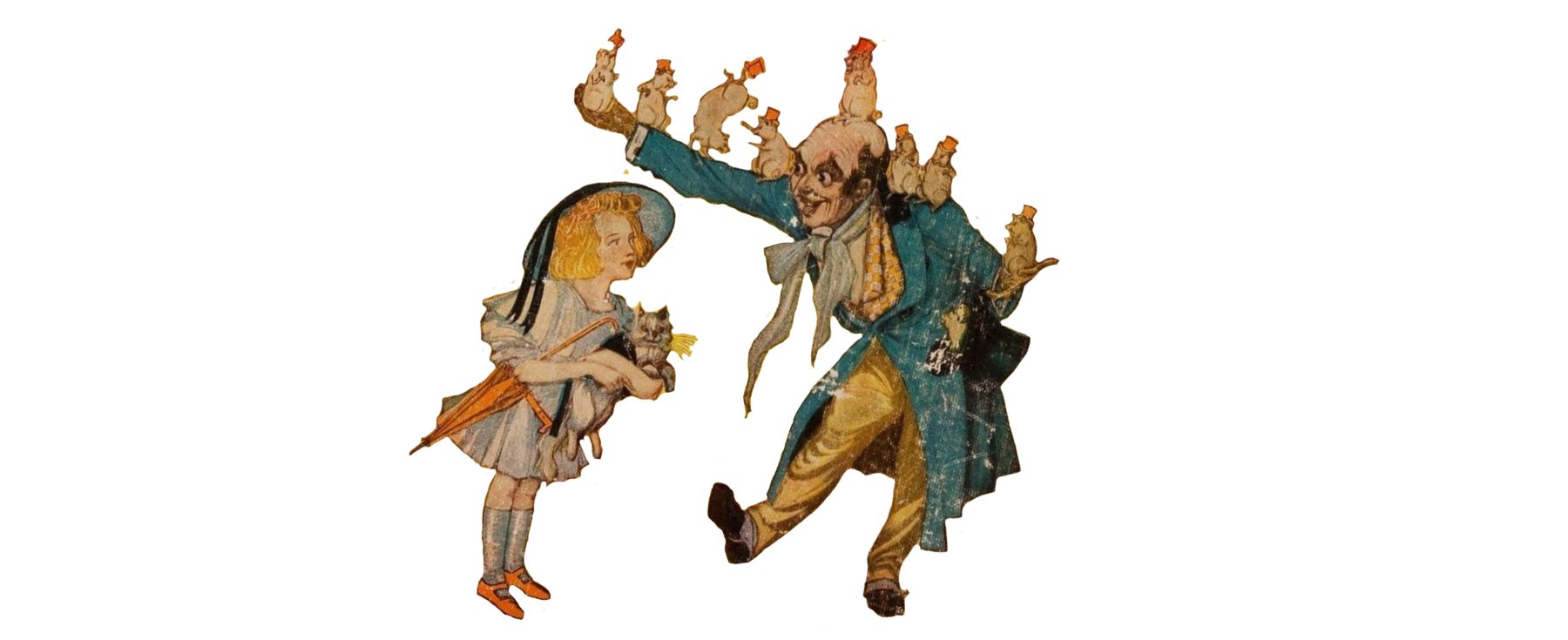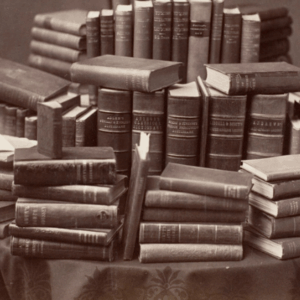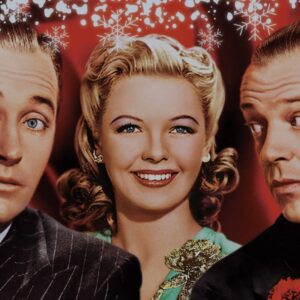
L. Frank Baum’s Literary Vision of an American Century: The Wizard of Oz at 125 Years
Ed Simon on Grifters, the Chicago World Fair, and Oz as Symbol of a Modern USA
Chicago was illuminated in a million alabaster lights for several enchanted months in 1893 at a fair commemorating the quadricentennial of America’s discovery. A glowing magical city arose in South Chicago—Jackson Park transformed into the Midway Plaisance—where the domes, bridges, arches, and pavilions of the World’s Columbian Exposition were decorated with twinkling white lights installed by the Westinghouse Electric Company.
From the German and Norwegian pavilions to the Canadian and French exhibitions, from the Beaux-arts magnificence of the Manufactures and Liberal Arts Building (the largest building in the world) to the colonnaded and domed neoclassical Administration Center, artificial luminescence glowed through the Illinois nights from May to October.
The papers called it the “White City,” a festival dedicated to the colonial past and the capitalist future, where American modernity was first imagined, but for a bespectacled and mustachioed ineffective actor and failed dry goods salesman who’d most recently lived in the flat expanse of tornado-prone South Dakota, those lights didn’t glow white. They were emerald.
By the time forty-five-year-old L. Frank Baum penned The Wonderful Wizard of Oz, published a hundred and twenty-five years ago today, he’d already written dozens of books, the first on the estimably pragmatic subject of poultry husbandry. In the twinkling of Westinghouse’s lights, something was imparted, however.
A sense of the fair’s majesty as espied by Baum is conveyed in Hilda Satt Polacheck’s I Came a Stranger: The Story of a Hull-House Girl, wherein she described how on the first night of the exposition “millions of lights were suddenly flashed on, all at one time…like getting a sudden vision of heaven,” a vision of heaven that consumed three times more energy than the rest of the city combined.
In the White City Baum had discovered his Emerald City, the capital of his fantastical land of Oz, a place of “brightness and glory” at the end of the Yellow Brick Road.
Three years later, in a 1896 story for the Chicago Times-Herald, Baum described a magnificent, charged metropolis where the “illumination in the evening was beautiful, and the sky was aglow with gorgeous electrical designs.” In the White City Baum had discovered his Emerald City, the capital of his fantastical land of Oz, a place of “brightness and glory” at the end of the Yellow Brick Road, the spires of its tall skyline giving a “beautiful green glow in the sky,” the walls of its tall towers described as “studded in countless…glittering emeralds,” each as bright as a light-bulb.
The year The Wonderful Wizard of Oz was published, Baum’s other big title was The Art of Decorating Dry Goods Windows and Interiors, honed from his earlier experience assembling department store displays, where he had constructed elaborate mannequins out of metal appliances.
Here was a different sort of book, however, with Baum—an inveterate Theosophist and follower of the Russian occultist Madam Blavatsky—quoted in a 1939 Los Angeles Sunday Times Magazine by Jeanne Potter published two decades after his death claiming that The Wonderful Wizard of Oz was “pure inspiration. It came to me right out of the blue. I think that the Great Author had a message to get across and He was to use the instrument at hand.”
The otherworldly pervades the whole strange story, with its powerful witches and sentient metal android, its bumbling scarecrow (inspired by a recurring childhood nightmare) and its celestial glowing city. This milieu isn’t just of children’s literature, but the dream vision. A distinctly American dream vision. A tale where a cyclone deposits a whole house in the “midst of a country of marvelous beauty” adorned with “lovely patches of green sward…with stately trees bearing rich and luscious fruits. Banks of gorgeous flowers… and birds with rare and brilliant plumage.”
Such paradisical rhetoric is the language of a John Bunyan, of a Dante. Generations of critics have tried to discover Theosophical, alchemical, or Jungian meanings in Baum’s work, but the wizard himself was more circumspect, regardless of the occasional implications that his inspiration was divine, claiming in the book’s introduction that it simply “aspires to being a modernized fairy tale.”
For the author, whose prolificacy bordered on logagraphia, and to whose bibliography there are forty-five novels, fourteen of which take place in his celebrated magical realm, The Wonderful Wizard of Oz would become the single book for which he is most known, even if the vast majority are only familiar with it through the 1939 technicolor masterpiece which drew its title from a 1903 Broadway adaptation of the original.
The primogeniture was Baum, however, and from his eccentric mind came the Kansas farmgirl Dorothy Gale and her little dog Toto who are spirited to Oz where she would be accompanied by the Tin Woodman, Scarecrow, and Cowardly Lion as they faced the green-hued Wicked Witch of the West (and her flying monkeys) on the Yellow Brick Road to the Emerald City, where they would have an audience with the great and power Oz himself.
Add to all this the dozens of little-known characters from Baum’s extended universe like Foolish Owl, the sky fairy Polychrome, the Kafkaesque Woggle-Bug, and Jack Pumpkinhead, whose head looks exactly like what you’d expect to get a sense of his gentle surrealism.
Endless pre-Thanksgiving television screenings have inured people to Baum’s radicalism, of what’s arguably the most influential American literary work of the twentieth-century. From the silent movie of 1910 to last year’s Wicked, Baum’s first novel in his fourteen-book series has been adapted for stage, film, and animation (including a 1967 Soviet propaganda cartoon).
As the most American of stories, The Wonderful Wizard of Oz is endlessly malleable, the story of leaving home part of the national ethos, but also central to those who’ve been marginalized by that same national ethos. The story of Dorothy, in no small part due to the performance of Judy Garland, has long been a touchstone in queer culture, with the self-designation “Friend of Dorothy” a means of secretly signaling identity in a pre-Stonewall world.
The soul musical The Wiz, a 1974 Charlie Smalls musical adaptation of a novel by William F. Brown, gave Baum’s original an Afrocentric update for the age of Black Power. Meanwhile, feminist interpretations have noted that the major characters of Baum (a vociferous supporter of suffrage), from Glinda to Dorothy, are all self-sufficient women.
Alexander Doty recalls in Flaming Classics: Queering the Film Canon how as a still-closeted young man the camp of the story “fed into my developing ‘gay’ appreciation of The Wizard of Oz.” None other than Salman Rushdie in his BFI Classics introduction to the film describes the story as being was “my very first literary influence,” where the “journey from Kansas to Oz is a rite of passage” of self-invention, of discovery.
Whether the provincialism of Doty’s childhood Waltham, Massachusetts or the cosmopolitanism of Rushdie’s Bombay, the green spires of Oz beckoned. In this way, Baum did for the United States what his great inspiration Lewis Carrol did for England in Alice’s Adventures in Wonderland. Yet The Wonderful Wizard of Oz wasn’t merely an attempt at constructing Yankee mythology, because Baum’s concern wasn’t the past so much as it was the future, first glimpsed in the White City.
Critics have tried to find contemporary resonance in Baum’s fabulism, looking to slot easy correspondences so that the munchkins become stolid American farmers, the Yellow Brick Road a comment on the Gold Standard, Dorothy’s silver slippers (they’re only ruby in the movie) an editorial on monetary bimetallism, and the Emerald City being the color of cash as a symbol of financial speculation, a parable about avarice.
First credited to a paper by scholar Henry Littlefield in 1965, there is something to this line of reasoning. The Oz works certainly make reference to political figures from the Gilded Age, including William Jennings Bryan and Theodor Roosevelt, while when a squeaky Tin Woodman in a stage adaptation worries about running out of oil, the Scarecrow tells him that he still “wouldn’t be as badly off as John D. Rockefeller” (incidentally, a sometime venture of the author was selling axle grease named Baum’s Castorine).
An argument can be made—not a bad argument either—where Dorothy and her trio represent broad types. The Kansas girl an American ingenue who is nonetheless cany and clever, commensurate with the nation itself; the Scarecrow representative of agriculture while the metallic Tin Woodsman is of industry. Then the Cowardly Lion is evocative of a military having not yet fully flexed its imperial muscle.
In this vein, historian Hugh Rockoff, in the sober pages of the Journal of Political Economy, cleverly hypothesized that the land was named Oz because that’s the abbreviation for “Ounces” (as in the measurement of silver and gold), making the Wizard feel all the more like a banker or captain of industry.
Obviously, such themes resonated with Baum’s audience, already raised on work from Harriet Beecher Stowe’s Uncle Tom’s Cabin to John Nast’s political cartoon that traded in easily interpretable symbols. But to say that The Wonderful Wizard of Oz is “simply” about prairie populism or the Spanish-American War, the Gold Standard or the political realignment of 1896, is to miss the point.
This then was who the most American type in was the entirety of The Wonderful Wizard of Oz, the eponymous miracle-worker himself.
Had Baum’s novel “only” been about the Coinage Act of 1873 or Manifest Destiny, then it wouldn’t still endure. Such arguments don’t do justice to the powerful strangeness of Baum’s narrative and his characters.
Rather what The Wonderful Wizard of Oz expresses is the experience of rapidly shifting into a gleaming and glowing modernity, where Dorothy had once dwelled amidst “nothing but the great gray prairie on every side,” a monotone domain where even the “grass was not green, for the sun had burned the tops of the long blades until they were the same gray color to be seen everywhere.” To arrive in Oz then was to arrive in the twentieth-century, to go from the flatness of Kansas (or South Dakota) to the skyscrapers of Chicago.
No wonder what most remember from the film is the spectacular transition from black-and-white to incandescent technicolor. A visualization of what it feels like to arrive in the future; what it feels like to be in the dark and to then turn the lights on. Fairytales are about the past, but Baum’s novel isn’t about that. The Wonderful Wizard of Oz isn’t a jeremiad—it’s a manifesto.
Chicago’s exposition was a declaration of ownership over the coming century; where the historian Frederick Jackson Turner lectured about the closing of the frontier and Buffalo Bill Cody’s Wild West revue was pushed to the margins. The future would be lit by George Westinghouse’s direct current.
In the moment that Baum saw the flip switched he witnessed not just a symbol, but a direct experience of the future—an American future. This then was who the most American type in was the entirety of The Wonderful Wizard of Oz, the eponymous miracle-worker himself. He is its villain and tragic figure all in one.
When Dorothy and the trio first encounter the Wizard, he “filled them with wonder,” but ultimately, they saw him “standing in just the spot he had hidden, a little old man, with a bald head and a wrinkled face,” a “humbug” trading in lights and sounds, chimeras and illusions, all of that which is solid melting into pure air. The Wizard wasn’t even from Oz, just Omaha.
In the United States, even after self-invention has failed, the grift continues. Baum was the wizard but failed at an Oz amusement park off the coast of California and at leading a production company, forcing him to declare bankruptcy in 1911. Dying in 1919, his last words were “Now we can cross the Shifting Sands,” the desert that surrounds Oz.
As for the Columbia Exposition, the city wasn’t marble but rather plaster and cement, spraypainted with oil and white lead whitewash, along with copious amounts of stucco. Those buildings which weren’t demolished at the fair’s conclusion were destroyed in a fire only a year later. The secret behind the trick, the lie within the story, the man behind the screen—all of it fades away in the end.
Ed Simon
Ed Simon is the Public Humanities Special Faculty in the English Department of Carnegie Mellon University, a staff writer for Lit Hub, and the editor of Belt Magazine. His most recent book is Devil's Contract: The History of the Faustian Bargain, the first comprehensive, popular account of that subject.












